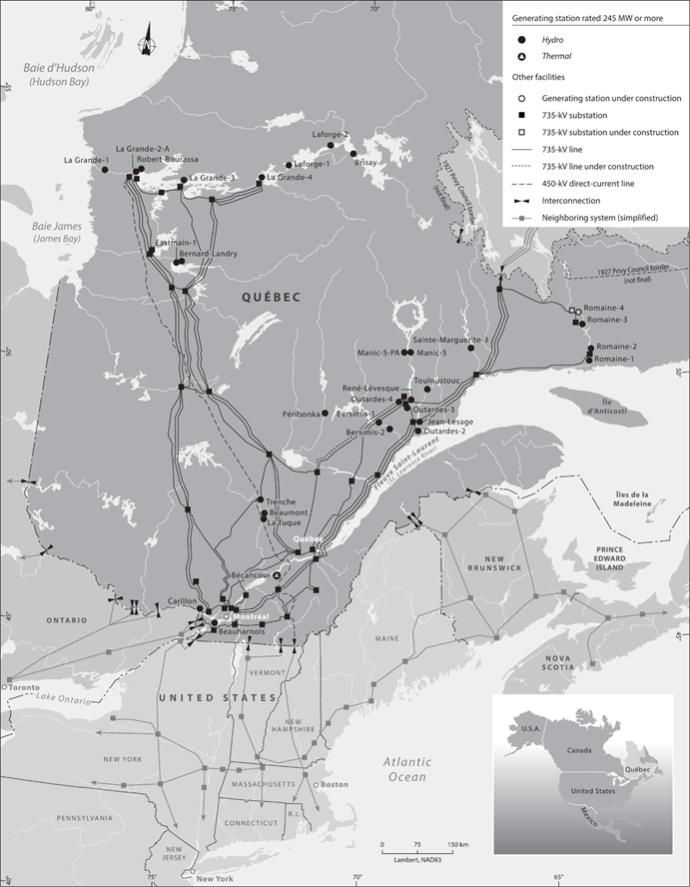NOTES TO CONSOLIDATED FINANCIAL STATEMENTS
Years ended December 31, 2019, 2018 and 2017
Amounts in tables are in millions of Canadian dollars, unless otherwise indicated.
Under the provisions of the Hydro-Québec Act (CQLR, c. H-5), Hydro-Québec is mandated to supply power and to pursue endeavors in energy-related research and promotion, energy conversion and conservation, and any field connected with or related to power or energy. Hydro-Québec is required, in particular, to supply a base volume of up to 165 TWh a year of heritage pool electricity for the Québec market, as set out in the Act respecting the Régie de l’énergie (CQLR, c. R-6.01). As a government corporation, Hydro-Québec is exempt from paying income taxes in Canada.
Note 1 Significant Accounting Policies
Hydro-Québec’s consolidated financial statements have been prepared in accordance with United States generally accepted accounting principles (“U.S. GAAP”).
Management is of the opinion that these consolidated financial statements present fairly, in all material respects, the consolidated financial position of Hydro-Québec.
Management has reviewed events occurring until February 14, 2020, the date of approval of these consolidated financial statements by the Board of Directors, to determine whether circumstances warranted consideration of events subsequent to the balance sheet date.
REGULATION
The Act respecting the Régie de l’énergie grants the Régie de l’énergie (the “Régie”) exclusive authority to determine or modify the rates and conditions under which electricity is transmitted and distributed by Hydro-Québec. Hydro-Québec’s electricity transmission and distribution activities in Québec are therefore regulated. Under this legislation, rates are set by reasoned decision of three commissioners after public hearings. The Act also stipulates that rates are set on a basis that allows for recovery of the cost of service and provides a reasonable return on the rate base. Since January 1, 2019, the Transmission Provider’s rates have been subject to performance-based regulation (PBR), which will apply for a four-year period. Under PBR, rates for the 2019 rate year were set using the cost-of-service method, while those for the three following years will be determined using a parametric formula specifically for transmission activities. This formula provides that, for a given year, service costs related to unforeseeable events will continue to be based on the cost-of-service method, while the other cost components will be calculated using an indexation formula. Previously, the Transmission Provider’s rates were based solely on the cost-of-service method. As for the Distributor, PBR was applied since January 1, 2018. Under PBR, rates for the 2018–2019 rate year, in effect from April 1, 2018, to March 31, 2019, were set using the cost-of-service method, whereas those for the 2019–2020 rate year, which went into effect on April 1, 2019, were set using a parametric formula specifically for distribution activities. This formula also had two components, namely the application of the cost-of-service method for costs related to unforeseeable events and the use of an indexation formula for the other cost components.
Moreover, the rates of the Transmission Provider are subject to an earnings-sharing mechanism, while those of the Distributor were subject to it until December 31, 2019.
The Act to simplify the process for establishing electricity distribution rates (S.Q. 2019, c. 27), passed by Québec’s National Assembly and enacted on December 8, 2019, has amended certain provisions of the Act respecting the Régie de l’énergie. In particular, it specifies that electricity distribution rates are to be set or modified by the Régie every five years commencing on April 1, 2025, and that they will be indexed annually in the interim, based on the annual change in the average Québec Consumer Price Index. It also provides for a freeze on distribution rates for the rate year beginning April 1, 2020, followed by their annual indexation for the next four years, as well as a refund to customers, before April 1, 2020, of an amount equivalent to the unamortized balances of the Distributor’s variance and deferral accounts as at December 31, 2019. Furthermore, it authorizes the Distributor to apply to the Régie to modify its rates before the scheduled date if they do not allow for recovery of the cost of service. Even after the coming into force of this Act, power distribution activities are still considered rate-regulated activities as defined under U.S. GAAP.
Under U.S. GAAP, it is acknowledged that rate regulation may affect the timing of the recognition of certain transactions in the consolidated results, giving rise to the recognition of regulatory assets and liabilities, which Hydro-Québec considers it is likely to recover or settle subsequently through the rate-setting process.
- 51 -

